Traditionally, the aboriginal territory of the Chetco and Tututni1 people was located in what is now southwestern Oregon
encompassing the area along the Rogue River and its tributaries from Galice Creek westward to the Pacific Ocean, and from present-day Bandon south to the California border. The home territory of the Chetco consisted primarily of the Chetco and Winchuck Rivers, while the Tututni resided south of Coquille to Pistol River, and up the Rogue River to its junction with the Illinois.
Maps showing the traditional territories of the Chetco, Tututni, and other Oregon coast peoples
Many distinct Indian groups along the Oregon coast and adjacent river valleys had established themselves in permanent locations. Each tribe, band, or group consisted of a number of neighboring villages, which ranged in size from a few families to many hundred people. Traditionally, the “village was the center of social, political, and economic life …. Villages within each watershed traded with one another, used the same trails and sometimes the same sacred sites, held social events and athletic competitions, and made accommodations in those years when the precious salmon runs were down.” However, although villages were linked by economics, a common language, and similar customs, each individual village “had political authority and was autonomous.” Moreover, the region’s Indian groups each held, occupied, and used their own lands, which were defined by specific, recognized boundaries.

